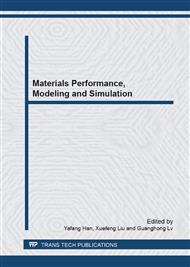p.217
p.223
p.229
p.237
p.243
p.250
p.255
p.260
p.268
Effect of Cooling Paths on Microstructure and Mechanical Properties of Vanadium Bearing Microalloyed Steel
Abstract:
Based on ultra fast cooling, effects of cooling paths on microstructure and mechanical properties of vanadium bearing microalloyed steel were investigated by the observation of optical microscope and scanning electron microscope and the testing of mechanical properties, moreover, the work-hardening exponent was determined based on stress-strain curves. The results show that using ultra fast cooling can effectively refine ferrite grain size and the ferrite grain size is decreased as the final temperature of ultra fast cooling is decreased. In addition, the microstructure and mechanical properties can be controlled by cooling paths. The ferrite-perlite microstructure with lower strength and higher n-value of approx. 0.2 and the ferrite-bainite microstructure with higher strength and lower n-value of approx. 0.16 can be gained at the higher and lower final temperature of ultra fast cooling, respectively. And the yield ratio are all lower than 0.85.
Info:
Periodical:
Pages:
243-249
Citation:
Online since:
March 2013
Authors:
Price:
Сopyright:
© 2013 Trans Tech Publications Ltd. All Rights Reserved
Share:
Citation:


